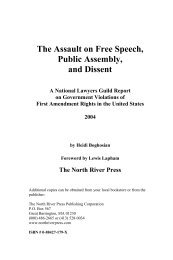Does your library have National Lawyers Guild Review?
Does your library have National Lawyers Guild Review?
Does your library have National Lawyers Guild Review?
You also want an ePaper? Increase the reach of your titles
YUMPU automatically turns print PDFs into web optimized ePapers that Google loves.
u.s. war crimes: torture as official bush administration policy97Understanding torturePsychology teaches that people everywhere are capable of great crueltyjust as they are also capable of great kindness. Much turns on the situation,which can bring out the worst in anyone. Institutionalized torture comesabout from otherwise ordinary people, who, when caught up in situationsthat seemingly demand it, abuse their fellow humans. As both StanleyMilgram’s 20 and Phillip Zimbardo’s 21 experiments <strong>have</strong> taught, otherwisenormal people can do surprisingly harsh things.We like to think that horrific human rights abuses are limited to narrowhistorical circumstances like those occurring in the Third Reich, and thatnormal, everyday humans do not act in such a manner. Milgram’s experimentsteach us that most individuals will do things that they would never<strong>have</strong> guessed themselves capable of. As historian Alfred W. McCoy reports,“one subject, a military veteran … recalled feeling like ‘an emotional wreck’… from the realization ‘that somebody could get me to do that stuff.” 22Philip Zimbardo’s prison experiments showed how groups of averagepeople can, when given arbitrary power (and a perceived need), severelyabuse others without remorse or concern for the consequences. Thus,Zimbardo’s experiment adds an understanding of the group dynamic thatcan lead normal people to abuse others.Sociologist Martha Huggins demonstrates a large, real world applicationof Milgram and Zimbardo’s findings. Her study of police torture in Brazilidentifies six conditions that are associated with systemic torture:1. Unchecked and arbitrary excessive rule;2. Ideology of war against evil (or communism, etc.);3. Secrecy of interrogation locations and procedures;4. Hidden identities of interrogators and those interrogated; 5. A social control division of labor giving plausible deniability andobscured perpetrator’s relationship to the violence; 6. A public rendered impotent by fear. 23Each of these factors has been present to some degree in the current waron terror. However, Brazil was, for the period in which many abuses occurred,an authoritarian junta. We know, however, that democracies, alsotorture. Why is this?Political scientist Darius Rejali explains that while democracies arenot as bad as totalitarian regimes, they not only engage in torture but also are“the real innovators in twentieth century torture. It might make Americans


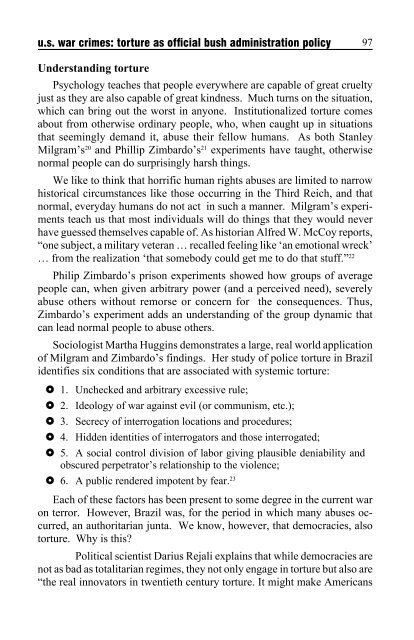
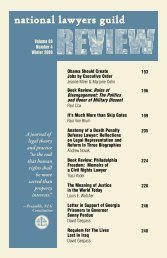

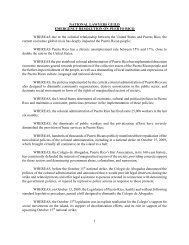
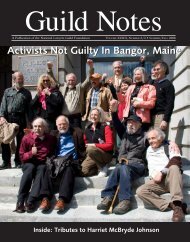
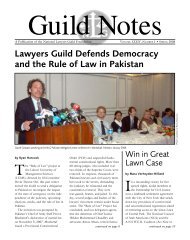
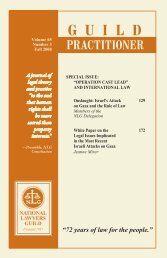

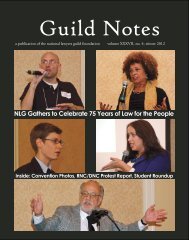

![NLGRev 68-2[1].indd - National Lawyers Guild](https://img.yumpu.com/30820772/1/167x260/nlgrev-68-21indd-national-lawyers-guild.jpg?quality=85)
